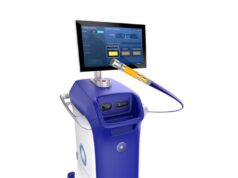Results from a first study set out to validate the use of a non-invasive cardiac output monitor (Nicom from Cheetah Medical) in the trauma setting have recently been published in the Journal of Trauma and Acute Care Surgery. The study, led by Michael Dunham at St Elizabeth Health Center (SEHC) in Youngstown, USA, has shown that, the Nicom system provides an “objective and clinically valid, relevant, and discriminate measure of cardiac function in acutely injured trauma activation patients.”
Previous studies have proven the value of monitoring cardiac output in trauma patients to predict and diagnose patient conditions. However, most methods are invasive or accurate only in limited, controlled situations. Because of this, factors such as blood pressure and heart rate which have been shown to have poor relation to cardiac output are more frequently used to guide treatment in trauma patients. The Nicom system, which uses Bioreactance technology, has made it possible to monitor cardiac output simply, quickly, and non-invasively.
“In trauma, we need to quickly diagnose complex injuries and rapidly make treatment decisions,” said Dunham, assistant director of Trauma and Critical Care Services at SEHC. “With little time to prepare and investigate, we constantly look for more information about the patient. The results of our study show that haemodynamic monitoring gives us significantly more information than traditional monitoring methods.”
The prospective, observational study explored 270 consecutive trauma activation patients during the first 10 to 60 minutes after emergency department arrival.
Results:
-Dunham et al found that Nicom measurements could better predict complications such as major blood loss and mortality than blood pressure. Nicom cardiac output can help doctors identify the difference between patients with and without blood loss.
-In 90% of all patients, it took an average of only eight minutes after arrival at the emergency department for a cardiac output to be obtained. According to the authors, “This speaks to the user-friendly features and reliability of the system at a time when clinical evaluation and management complexities substantially challenge trauma team members.”
-The investigators compared records of these 270 patients to trauma patients from the same time periods in previous years. For the 95% of patients in the most common trauma severity categories, the average length of hospital stay was nearly one day shorter for the Nicom patients.
“As a continuous and non-invasive system, Nicom gives us information within minutes of the patient’s arrival that we normally had access to only in intensive care settings. This strategy empowers the trauma team with valuable information that speeds therapeutic decisions and, in our experience, leads to improved outcomes and reduced length of hospital stay compared to using traditional measures such as blood pressure,” said Dunham. “The results from this study imply that trauma programmes should seriously consider incorporating non-invasive haemodynamic and cardiac output monitoring.”









